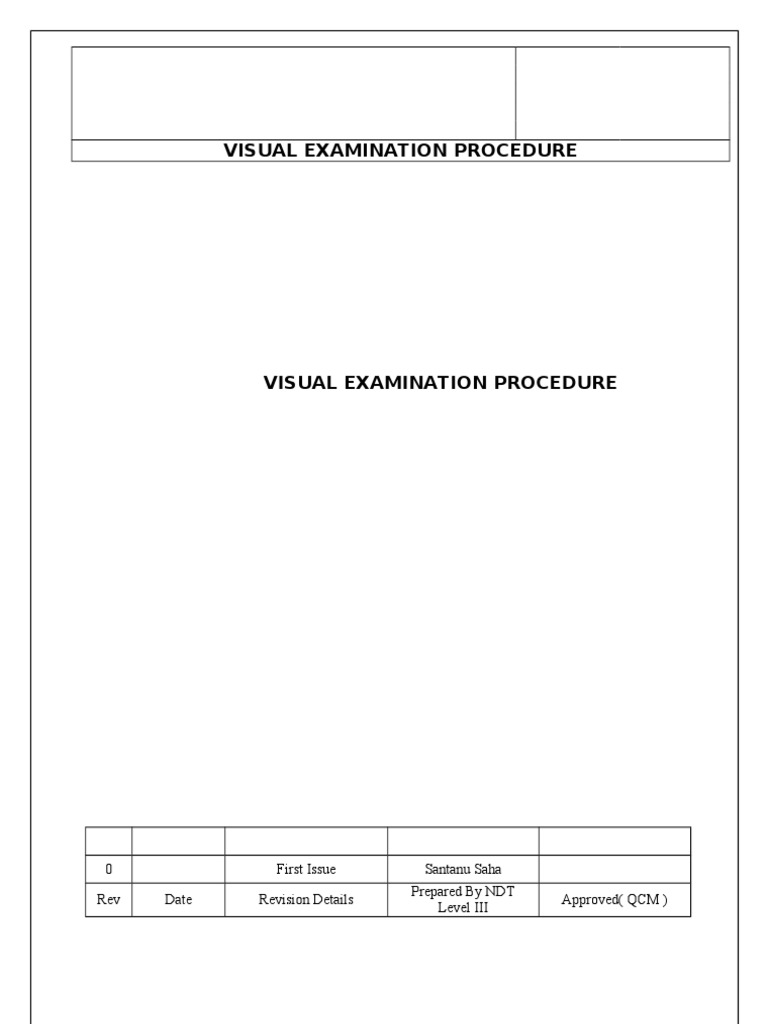The art of visual examination plays a pivotal role in various professional fields, particularly in the domains of welding and construction. The instrument primarily used for visual inspection in these contexts is the **visual inspection tool**, often colloquially referred to simply as a **visual inspection device**. This term encompasses a wide array of tools designed to assist in examining the integrity and quality of materials and structures. Understanding the nuances of this instrument illuminates the intricate interplay between technological advancement and human oversight.
The significance of visual examination cannot be overstated. It is not merely an activity confined to structural analysis but a fundamental exercise in judicious observation. The visual inspection tool serves as a bridge, connecting the observer’s intent and the tangible realities of the material world. Prior to the advent of advanced machinery and automated diagnostics, human eyes were the foremost instruments used for this purpose—an assertion that amplifies the allure of visual examination.
In the realm of welding, the visual inspection tool assumes various forms, notably **magnifying glasses**, **cameras**, and **endoscopes**. Each instrument addresses specific exigencies encountered during welding inspections. For example, a magnifying glass enhances the minutiae of weld quality, allowing inspectors to discern tiny cracks, inclusions, and other surface imperfections that might compromise structural integrity. Conversely, cameras facilitate detailed documentation of inspections, serving not only as a record but also enabling retrospective evaluations of workmanship over time.
The emphasis on visual inspection in welding emanates from several compelling reasons. First and foremost is the principle of immediacy. Inspectors engage with the workpiece directly, enabling them to form instantaneous assessments based on visual cues. This immediacy cultivates an intimate connection between the inspector and the inspected, fostering an understanding that transcends mere observation. The tactile experience—the distinct sound of a weld bead being forged, the sheen of molten metal cooling—frames a memorable context for the observer, heightening the overall analytical experience.
Moreover, visual inspection serves as a preliminary barrier against potential failures in material performance. Recognizing flaws before they escalate into catastrophic failures is paramount in industries where safety is non-negotiable. This risk mitigation underscores a profound layer of fascination surrounding the visual inspection tool—not merely as an object, but as a guardian of structural soundness and human life.
Another dimension of allure is the historical narrative interwoven with visual examination tools. From the rudimentary methods of ancient artisans to the sophisticated instruments of contemporary engineering, each evolution marks an exploration of human ingenuity. The quest for precision has perpetually driven innovation, leading to the development of tools that blend artistry with technology. These tools are constructed from materials that convey resilience and reliability, such as high-grade optics or durable casing, reflecting the meticulous crafting that parallels the very welding processes they analyze.
Furthermore, visual examination transcends the mere act of looking. It entails an acute discernment for details and anomalies, embodying a form of cognitive engagement that invites a deeper understanding of the inspected object. This interplay of observation and interpretation unveils layers of meaning—each defect or imperfection tells a story, a narrative of how the material responded to various stresses or environmental conditions. Therefore, the visual inspection tool becomes a storytelling device, translating the silent language of materials into comprehensible insights.
Additionally, the concept of ‘trusting the eye’ in visual inspections taps into an intrinsically human endeavor. The reliance on visual examination evokes philosophical inquiries into perception and reality. What do we deem accurate? What imperfections are overlooked? Such interrogation elevates the tool from a utilitarian implement to a philosophical instrument, enveloping the user in a broader discourse on observation and interpretation.
The importance of training and expertise when utilizing visual inspection tools is paramount. While all instruments may appear straightforward, the skill with which they are employed delineates proficient inspectors from novices. Training programs emphasize the criticality of both theoretical knowledge and practical experience, underscoring that effective visual examination necessitates an amalgamation of sensory acumen and cognitive proficiency. The dedication to refining these abilities contributes to an inspector’s credibility, ensuring that assessments are not only accurate but also reliable.
As the landscape of technology evolves, the integration of augmented reality (AR) and artificial intelligence (AI) into visual inspection tools presents intriguing possibilities. These advancements enhance the observer’s capabilities, offering real-time data analysis and virtual overlays that provide contextual information. However, this progression raises pertinent questions about the role of human oversight in an increasingly automated environment—will the intimate connection fostered through manual inspections succumb to machines? The exploration of such dilemmas reveals a profound fascination with the balance between human intuition and technological enhancement.
The visual inspection tool, in all its forms, is a testament to the human desire for understanding and control within the physical world. It reflects an enduring commitment to quality and safety in areas that demand precision. Through visual examination, layers of meaning unfurl, revealing not just the status of materials but also the human narratives behind their creation. This intricate relationship between observer and inspected invites contemplation, illuminating why the instrument used for visual examination holds a special place in both practical application and theoretical discourse.
